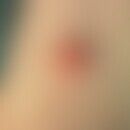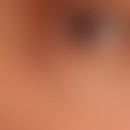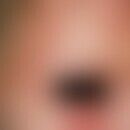Synonym(s)
HistoryThis section has been translated automatically.
DefinitionThis section has been translated automatically.
Rare, usually asymptomatic, slow-growing, benign tumor of the skin of unknown etiology and pathogenesis.
You might also be interested in
Occurrence/EpidemiologyThis section has been translated automatically.
Very rare (less than 200 cases have been reported in the literature worldwide to date - Frew JW 2015).
EtiopathogenesisThis section has been translated automatically.
ManifestationThis section has been translated automatically.
Mainly women in middle age (w:m=3:1). In a retrospective analysis of 142 cases (Frew JW 2015), the average age at onset of the disease was 50.1 years.
LocalizationThis section has been translated automatically.
ClinicThis section has been translated automatically.
HistologyThis section has been translated automatically.
Under a slightly acanthotic epidermis there is a variably dense, partly perivascular, partly diffuse infiltrate of lymphocytes, spindle-shaped cells and bizarre, large, multinucleated giant cells as well as numerous vascular incisions.
Endothelial cells: positive staining with factor VIII related antigen, Ulex europaeus I lectin, CD31, CD 34.
Giant cells (multinuclear histiocytes): Positive staining with vimentin.
Mononuclear histiocytes: positive staining with CD 68, lysozyme, alpha-1 antitrypsin; negative for S100 protein and CD1a.
Differential diagnosisThis section has been translated automatically.
- Kaposi's Sarcoma
- Histiocytoma(s)
- Anulare granuloma.
- Lichen planus
- Arthropod reaction (see below pseudolymphomas of the skin)
TherapyThis section has been translated automatically.
LiteratureThis section has been translated automatically.
Frew JW (2015) Multinucleate cell angiohistiocytoma: clinicopathological correlation of 142 cases with insights into etiology and pathogenesis. Am J Dermatopathol 37:222-228.
Grgurich E et al (2019) Multinucleate cell angiohistiocytoma: case report and literature review. J Cutan Pathol 46:59-61.
- Jones EW et al (1990) Multinucleate cell angiohistiocytoma: an acquired vascular anomaly to be distinguished from Kaposi's sarcoma. Br J Dermatol 122: 651-663
- Puig L (2002) Multinucleate cell angiohistiocytoma: a fibrohistiocytic proliferation with increased mast cell numbers and vascular hyperplasia. J Cutan Pathol 29: 232-237
- Smith NP, Wilson Jones E (1985) Multinucleate cell angiohistiocytoma: a new entity. Br J Dermatol 113: 15
- Vakeva L et al (2003) Multinucleate cell angiohistiocytoma: a report of four cases in Finland. Acta Derm Venereol 83: 222-223
- Weinstabl A et al (2010) Angiohistiocytoma withz multinucleate giant cells. JDDG 8: 951-952
Outgoing links (7)
Dermatofibroma; Granuloma anulare classic type; Kaposi's sarcoma (overview); Laser; Lichen planus classic type; Papel; Pseudolymphomas of the skin (overview);Disclaimer
Please ask your physician for a reliable diagnosis. This website is only meant as a reference.




